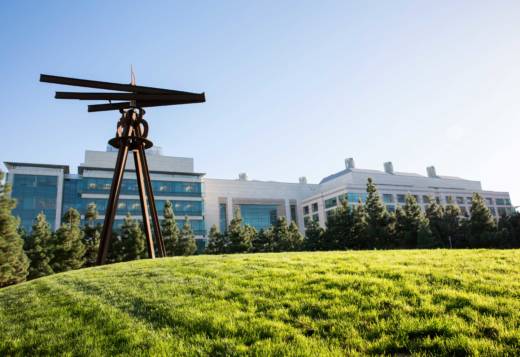Diller, whose family fortune rose from real estate development, knew about the planned donation before her death. Her daughter Jackie Safier, who’s president of the foundation, says her mother, “really believed [UCSF] could have an incredible impact on healthcare worldwide if they had the necessary resources.”
UCSF is known for its health care schools, including Medicine, Nursing, Pharmacy and Dentistry and its medical centers, the newest of which, at Mission Bay in San Francisco, opened in 2015.
Its scientific breakthroughs include: discovering vitamin E, isolating the gene for insulin, co-discovering the AIDS virus and being the first to link obesity to Type 2 diabetes.
What’s unusual about the Diller donation is that it’s “relatively unrestricted.” That means the funds don’t have to be used for a narrow purpose. Those types of university contributions, though desperately sought, are uncommon, according to Hawgood.
Last year, less than one percent of UCSF’s financial gifts were “discretionary,” the term used for unrestricted funds.
“So it’s extraordinarily remarkable, rare and frankly, exciting,” says Hawgood.
He says the money will go toward attracting “the best of the best” faculty and will support students who couldn’t otherwise afford higher education.
“We are really committed to a very diverse student body,” says Hawgood. “This kind of funding for students allows us to put that on steroids.”
Four hundred million will go toward UCSF’s endowment and $100 million will support an innovation fund.
Of the $400 million, half will go toward supporting current faculty and attracting new talent. The other $200 million will support students at UCSF’s four professional schools, some of it, in the form of scholarships.
That financial aid is definitely needed, says Hawgood. The majority of UCSF’s professional students receive financial aid but less than 10 percent get enough to cover all their costs.
The final $100 million is part of an innovation fund to be used at the chancellor’s discretion.
It could help fund some of the university’s current biomedical work including advanced microscopy techniques, cell engineering using gene-splicing tools such as CRISPR, and finding a cure for AIDS.
UCSF hasn’t disclosed when the funding will become available. When it does, students will be able to discover scholarship opportunities on the university’s admissions website.
